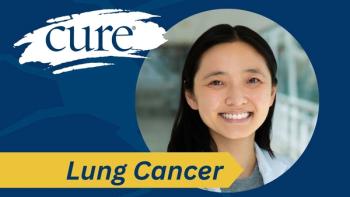Among patients with advanced melanoma, treatment with Opdivo (nivolumab) with or without Yervoy (ipilimumab) benefited both overall survival (OS, the time a patient lives, regardless of disease status) and melanoma-specific survival (MSS, the time until a patient with melanoma dies of that disease) when compared to treatment with standalone Yervoy at 10 years, study results have shown.
The final results of the phase 3 CheckMate 067 trial were presented at the 2024 ESMO Congress and published in The New England Journal of Medicine.
Data showed that with a minimum follow-up of 120 months, the median OS was 71.9 months with Opdivo plus Yervoy versus 19.9 months with Yervoy alone and 36.9 months with Opdivo alone. Ten-year OS rates were 43%, 37% and 19% with Opdivo/Yervoy, Opdivo monotherapy and Yervoy monotherapy, respectively. The OS benefit was upheld across prespecified subgroups.
Study Highlights:
- The combination of Opdivo and Yervoy significantly improved both overall survival and melanoma-specific survival compared to Yervoy alone at 10 years of follow-up.
- The positive effects of Opdivo plus Yervoy were observed over a decade, highlighting the long-term benefits of this treatment combination.
- The improved survival outcomes with Opdivo plus Yervoy were observed across various subgroups of patients with advanced melanoma.
“The 10-year CheckMate 067 results for [Opdivo] plus [Yervoy] represent the longest median OS in a phase 3 study of an anti–PD-1 agent for any tumor type,” lead study author Dr. James Larkin, professor and consultant medical oncologist at The Royal Marsden Hospital in the United Kingdom, said in an oral presentation during the congress. “These results demonstrate the sustained benefit and impact of dual checkpoint inhibitor therapy on the long-term prognosis of patients with advanced melanoma, highlighting the potential for cure in patients who respond to this type of treatment.”
In 2015, the FDA approved the combination of Opdivo and Yervoy for the treatment of adult and pediatric patients with metastatic melanoma, based on earlier findings from CheckMate 067. Opdivo is also approved for use as a single agent in this patient population.
In the CheckMate 067 trial, data previously showed that Opdivo combined with Yervoy, or Opdivo alone, improved OS compared with Yervoy alone. At 7.5 years, the median OS with Opdivo/Yervoy was 72 months, 37 months with Opdivo alone and 20 months with Yervoy alone. Additionally, 7.5-year MSS rates were 98%, 97% and 95% with the combination, single-agent Opdivo and single-agent Yervoy, respectively, in patients who were alive and progression free at three years.
In the landmark trial, 945 patients with previously untreated, unresectable or metastatic melanoma were randomized to receive Opdivo plus Yervoy every three weeks for four doses, then Opdivo every two weeks (314 patients); Opdivo every two weeks plus Yervoy-matched placebo (316 patients); or Yervoy every three weeks for four doses plus Opdivo-matched placebo (315 patients) until disease progression or unacceptable toxicity.
Additional results showed that the median MSS was not reached with Opdivo plus Yervoy (meaning less than half of the patients in that arm had died of melanoma) and was 49.4 months with single-agent Opdivo versus 21.9 months with single-agent Yervoy. The 10-year MSS rates were 52%, 44% and 23%, respectively.
Larkin noted that the MSS results were consistent by BRAF mutation status and PD-L1 expression level.
In patients who experienced a three-year or greater progression-free survival (PFS; the time a patient lives without their disease spreading or worsening) from earlier data, the 10-year MSS rates were 96%, 97% and 88% with the combination, Opdivo alone and Yervoy alone, respectively.
“In CheckMate 067, PFS plateaued at three years, and these analyses were conducted to determine if being alive and progression free at three years may be a surrogate for long-term clinical benefit,” Larkin explained. “Indeed, these data suggest that PFS at three years is a strong surrogate marker for long-term survival with 10-year MSS rates of greater than 96% in the [Opdivo]-containing arms.”
Ten-year MSS rates were also evaluated by depth of response and determined to be a second long-term surrogate marker. In the Opdivo/Yervoy arm, the best tumor burden reduction was 80% or higher in 87% of patients (102 patients) and was between 50% and 80% in 72% of patients (55 patients); these rates occurred in 88% (85 patients) and 75% (32 patients) of those on Opdivo alone and 80% (24 patients) and 40% (17 patients) in those on the Yervoy-only arm, respectively.
Furthermore, 36% of patients on Opdivo plus Yervoy received subsequent systemic therapy compared with 50% of those on Opdivo alone and 67% of those on Yervoy alone. Regarding safety, there were no new observed safety signals and no treatment-related deaths have been reported since the 36-month analysis.
Larkin also noted that the incidence of late-emergent, spontaneously reported treatment-related side effects, defined as occurring more than 100 days following treatment, was low across all three arms. In total, any-grade treatment-related side effects occurred in 96%, 87% and 86% of patients in the combination, single-agent Opdivo, and single-agent Yervoy arms, respectively; these were grade 3 (severe)/4 (life-threatening) in 63%, 25% and 30% of patients, respectively.
Any-grade and grade 3/4 treatment-related side effects that led to treatment discontinuation occurred in 45% and 34% of those on the combination arm, respectively, 16% and 9% in those on Opdivo alone, and 17% and 15% of those on Yervoy alone, respectively. There were two treatment-related deaths on the combination arm compared with one each on the monotherapy arms.
The median MSS in patients with grade 3/4 TRAEs was not reached with the combination, not reached in the Opdivo-alone arm and 30.8 months with Yervoy alone. The 10-year MSS rates in these patients were 54%, 71% and 29%, respectively.
“[Treatment-related side effects] did not negatively affect survival as 10-year MSS rates in patients with a grade 3/4 [treatment-related side effect] were higher than in the intent-to-treat population within each treatment arm,” Larkin added.
For more news on cancer updates, research and education, don’t forget to subscribe to CURE®’s newsletters here.






